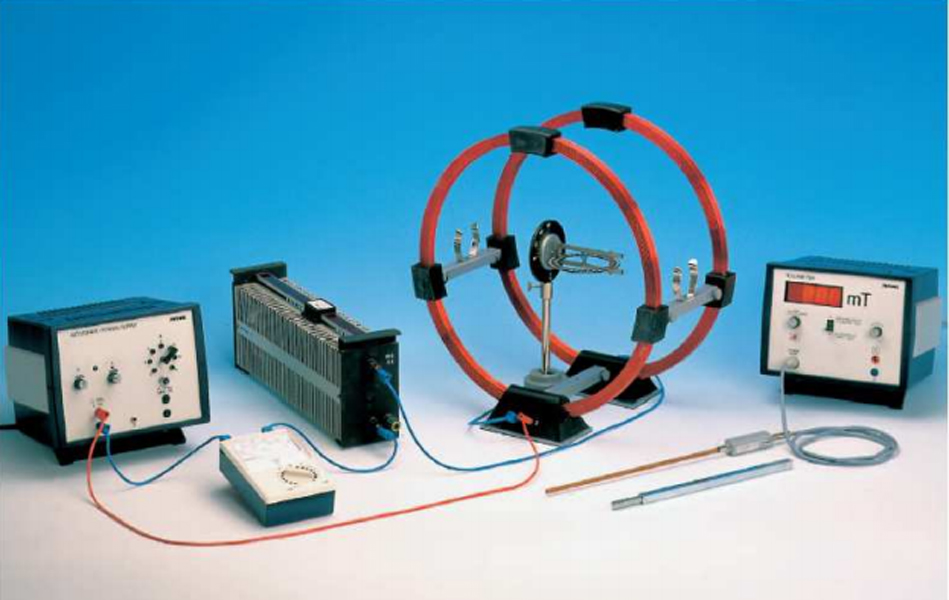Determination of the earth’s magnetic field

A constant magnetic field, its magnitude and direction known, is superimposed on the unknown earth magnetic field. The earth-magnetic field can then be calculated from the magnitude and direction of the resulting flux density.
- Particularly homogeneous magnetic field and high flux density due to large Helmholtz coil diameter
- Setup with precalibrated teslameter does not require additional magnets and coils for calibration
Hall probe, axial
PHYWE Teslameter, digital
Support rod, stainless steel, l = 250 mm, d = 10 mm
Stand tube
Rheostat, 100 Ohm, 1.8 A
Magnetometer
Helmholtz coils, one pair
Digital multimeter 2005
Connecting cord, 32 A, 1000 mm, red
Connecting cord, 32 A, 1000 mm, blue
PHYWE power supply, universal DC: 0…18 V, 0…5 A / AC: 2/4/6/8/10/12/15 V, 5 A
Right angle clamp expert
Barrel base expert
- The magnetic flux of a pair of Helmholtz coils is to be determined and plotted graphically as a function of the coil current. The Helmholtz system calibration factor is calculated from the slope of the line.
- The horizontal component of the earth-magnetic field is determined through superimposition of the Helmholtz field.
- The angle of inclination must be determined in order to calculate the vertical component of the earth-magnetic field.
- Magnetic inclination and declination
- Isoclinic lines
- Isogenic lines
- Inclinometer
- Magnetic flow density
- Helmholtz coils
